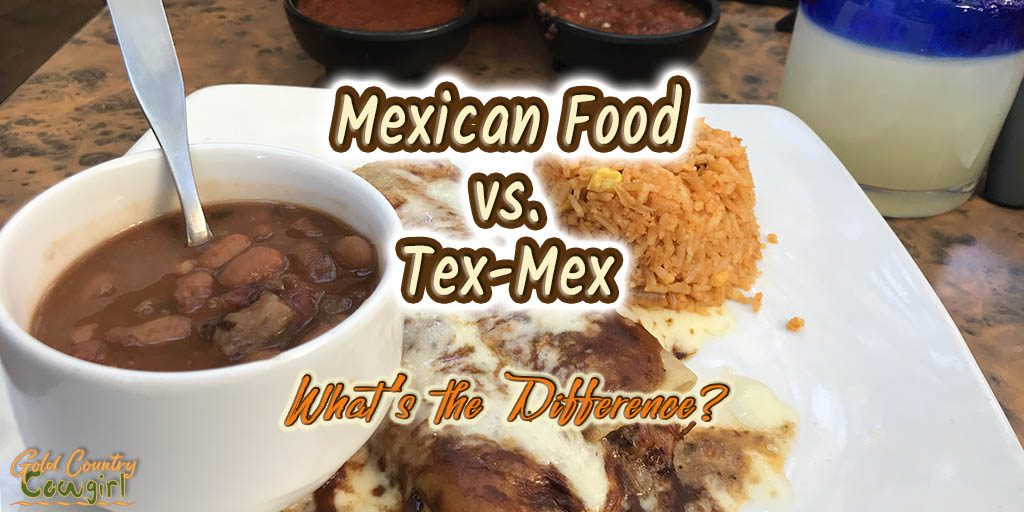Mexican and Tex-Mex cuisine are two distinct styles of cooking. Mexican cuisine is a deep-rooted cuisine that has evolved over thousands of years, featuring a variety of ingredients, including vegetables, spices, meats, and seafood. It is generally spicier and more complex in flavor profile than Tex-Mex cuisine, which is a fusion of Texan and Mexican cuisine. Tex-Mex cuisine tends to feature simpler flavor profiles and places a greater emphasis on meats and beans than on fresh vegetables. Tex-Mex cuisine is quicker and easier to make than traditional Mexican dishes, usually requiring less time and fewer steps. Both styles of cuisine have been influenced by various cultures over the years.
Mexican vs. Tex-Mex cuisine: What’s the difference?
When people hear the words “Mexican food” and “Tex-Mex,” they often think of the same thing, but they are two distinct styles of cuisine. Although both types of food share many similarities, they differ in several elements, including the ingredients, the cooking techniques, and the cultural influences. In this article, we will compare and contrast Mexican and Tex-Mex cuisine, highlighting their key differences.
Origins of Mexican and Tex-Mex cuisine
Mexican cuisine is the traditional food of Mexico, which has been influenced by the pre-Columbian culture, the Aztec, and Maya empires. It is a deep-rooted cuisine that has evolved over thousands of years, featuring a variety of ingredients, including vegetables, spices, beans, meats, and seafood. Mexican cuisine has been recognized by UNESCO as Intangible Cultural Heritage.
Tex-Mex cuisine, on the other hand, is a fusion of Texan and Mexican cuisine. It has emerged as a result of Mexican immigrants who moved to Texas and introduced their traditional flavors to the local cuisine. Tex-Mex cuisine features popular dishes such as nachos, fajitas, and chili con carne, which have become a modern staple in America.
Ingredients
The ingredients used in Mexican and Tex-Mex cuisine differ significantly. Mexican food is generally spicier and features a more profound and intricate flavor profile. Chilies, fresh herbs, and spices are the essential elements in Mexican cooking. Mexican food relies heavily on vegetables, including tomatoes, avocado, and onions, along with various spices like cumin, coriander, and Mexican oregano. Meats like chicken, beef, and pork are also common, along with seafood like shrimp, fish, and octopus.
Tex-Mex cuisine, on the other hand, tends to be less spicy and features simpler flavor profiles. Tex-Mex cuisine places a greater emphasis on meats and beans than on fresh vegetables. The usual meats used in Tex-Mex cooking include beef, chicken, and pork cooked with added spices and flavorings like chili powder, cumin, and paprika. Most dishes come with rice, beans, flour tortillas, and cheese.
Cooking techniques
Mexican cooking techniques vary from region to region but generally involve roasting, boiling, and grilling over an open flame or comal. Mexican dishes tend to be more intricate, with a wide range of ingredients, making them more time-consuming to prepare. Traditional Mexican dishes like mole, chiles en nogada, and tacos al pastor require considerable time and effort to prepare but result in rich, authentic flavors.
Tex-Mex cuisine is quicker and easier to make than traditional Mexican dishes, usually requiring less time and fewer steps. Tex-Mex dishes are often prepared in a skillet or sauteed on a griddle, and many of the ingredients, including beans, rice, and cheese, are premade.
Cultural influences
Both Mexican and Tex-Mex cuisines have been influenced by various cultures over the years, including Spanish, Indigenous, and African cultures. In Mexico, the native ingredients and spices combined with Spanish Conquest influences resulted in a unique cuisine that is loved worldwide. Mexican cuisine has continually evolved over the years, with Asian and Middle Eastern influences blending to create modern Mexican fusion cuisine.
Tex-Mex cuisine, on the other hand, is heavily influenced by Mexican cuisine but also incorporates elements of Texas cooking. The fajitas and nachos, for instance, were invented in Texas in the 1950s and later became a standard fixture in Tex-Mex cuisine. The cowboy culture in Texas also played a role in Tex-Mex cuisine, with barbecuing and grilling becoming a popular cooking style.
Conclusion
Mexican and Tex-Mex cuisines are two distinct styles of cooking, each with its own unique flavor profiles, ingredients, and cultural influences. While they share some similarities, they are different in many ways, from the ingredients used to the preparation techniques. While traditional Mexican food is usually more complex, Tex-Mex dishes are more straightforward and feature premade elements like cheese and beans. Mexican cuisine is deeply rooted in history and culture, while Tex-Mex cuisine is a product of a fusion of cultures. When it comes to choosing between the two, it comes down to personal preference.
